Alamar
1:00 p.m. Bijou Art Cinemas
Tickets: $6 all
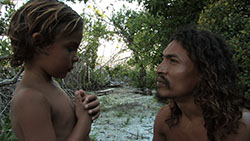 Jorge and Roberta have been separated for several years. They simply come from opposite worlds: he likes an uncomplicated life in the jungle, while she prefers a more urban existence. He is Mexican and she is Italian, and she has decided to return to Rome with their five-year-old son, Natan. But before they leave, Jorge, hoping to teach young Natan about his Mayan origins, takes him to the pristine Chinchorro reef and eases him into the rhythms of a fisherman’s life. At first the boy is physically and emotionally uncomfortable with the whole affair, and gets seasick on the boat taking them to their destination. But as father and son spend more time together, Natan begins a learning experience that will remain with him forever.
Jorge and Roberta have been separated for several years. They simply come from opposite worlds: he likes an uncomplicated life in the jungle, while she prefers a more urban existence. He is Mexican and she is Italian, and she has decided to return to Rome with their five-year-old son, Natan. But before they leave, Jorge, hoping to teach young Natan about his Mayan origins, takes him to the pristine Chinchorro reef and eases him into the rhythms of a fisherman’s life. At first the boy is physically and emotionally uncomfortable with the whole affair, and gets seasick on the boat taking them to their destination. But as father and son spend more time together, Natan begins a learning experience that will remain with him forever.
 Filmmaker Pedro González-Rubio crafted a beautiful, organic, visceral, and visual experience with Alamar (aka To The Sea), his first solo directorial credit. This semi-documentary, in the spirit of Robert Flaherty, makes every shot a memorable composition of elegant cinematography and perceptive observation. The New York Times’ Stephen Holden writes: “The characters in Alamar may be playing versions of themselves, but the writer, editor, and director Pedro González-Rubio has constructed a film in which the journey has an overarching mythic resonance that evokes fables from Robinson Crusoe to The Old Man and the Sea.”
Filmmaker Pedro González-Rubio crafted a beautiful, organic, visceral, and visual experience with Alamar (aka To The Sea), his first solo directorial credit. This semi-documentary, in the spirit of Robert Flaherty, makes every shot a memorable composition of elegant cinematography and perceptive observation. The New York Times’ Stephen Holden writes: “The characters in Alamar may be playing versions of themselves, but the writer, editor, and director Pedro González-Rubio has constructed a film in which the journey has an overarching mythic resonance that evokes fables from Robinson Crusoe to The Old Man and the Sea.”
ARTIST TALK AND LIVE PERFORMANCE: MING WONG
2:00 p.m. Jordan Schnitzer Museum of Art Lecture Room and White Stag Building, Portland FREE
 Artist Ming Wong will visit Eugene and Portland via live video to give an artist’s talk and live performance in conjunction with his two-city exhibition, Emotion Pictures. Wong has been recognized internationally for his ambitious performance and video works that engage with the history of world cinema. Working through the visual styles and tropes of such iconic film directors as Rainer Werner Fassbinder, Wong Kar-wai, and Ingmar Bergman, Wong’s practice considers the means through which subjectivity and geographic location are constructed by motion pictures.
Artist Ming Wong will visit Eugene and Portland via live video to give an artist’s talk and live performance in conjunction with his two-city exhibition, Emotion Pictures. Wong has been recognized internationally for his ambitious performance and video works that engage with the history of world cinema. Working through the visual styles and tropes of such iconic film directors as Rainer Werner Fassbinder, Wong Kar-wai, and Ingmar Bergman, Wong’s practice considers the means through which subjectivity and geographic location are constructed by motion pictures.
At the Jordan Schnitzer Museum of Art, from April 12 through June 2, Wong is showing Life and Death in Venice, a revisiting of Luchino Visconti’s 1971 film version of Thomas Mann’s Death in Venice. On opposite screens the artist performs the roles of both the aging composer/writer Gustav von Aschenbach, and Tadzio, the adolescent boy whose uncorrupted youth and beauty mirrors the older man’s state of crisis and impending death. In the White Box Gallery in Portland (April 4–May 4, 2013), Wong is showing Life of Imitation, a looped 13-minute double-channel installation. Originally commissioned for the 53rd Venice Biennale Singapore Pavilion, this work is inspired by the classic Hollywood melodrama Imitation of Life, where a black mother meets her mixed-race daughter who has been running away from her true “identity.” Wong’s version features three male actors from the main ethnic groups in Singapore (Chinese, Malay, and Indian) taking turns to play the black mother and her “white” daughter.
IMITATION of Life
4:00 p.m. NW Film Center Whitsell Auditorium, Portland Art Museum
 Though deemed a “soap opera” and a “women’s picture” by the critics upon its original release, Imitation of Life (1959) today is held up as a masterpiece of Douglas Sirk’s directing style.
Though deemed a “soap opera” and a “women’s picture” by the critics upon its original release, Imitation of Life (1959) today is held up as a masterpiece of Douglas Sirk’s directing style.
Lana Turner plays Lora, a single white mother whose Hollywood stardom ambitions come at the expense of any meaningful relationship with her daughter, Susie (Sandra Dee). Lora’s black housekeeper, Annie (Juanita Moore), has troubles of her own as she faces the rejection of her own fair-skinned daughter, Sarah Jane (Susan Kohner), who abandons her heritage for a chance to be accepted as white. As years of selfishness and denial pass, tragedy strikes and forces the women to come to terms with their own identities. Imitation of Life portrays the searing paradox and despair of racism in America, and the self-hatred it promotes. Both Kohner and Moore earned Academy Award nominations for their stirring and spectacular performances.
Inori
4:00 p.m. Bijou Art Cinemas
Tickets: $6 all
![]()
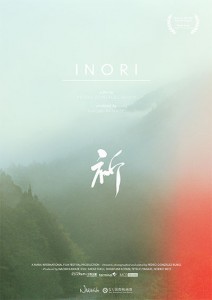
Japan, 2012
Directed by Pedro González-Rubio
Screenplay by Pedro González-Rubio
Cinematography by Pedro González-Rubio
Editing by Pedro González-Rubio
Music by Aldo Arechar
Running Time: 71 minutes
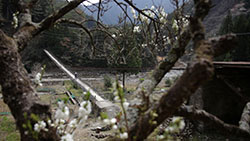 Emerging Mexican documentary filmmaker Pedro Conzález-Rubio, director of the acclaimed Mexican documentary Alamar, creates another visually stunning and tranquil piece. Fans of Alamar will find gentle pleasures in yet another colorful portrayal of nature’s transcendent beauty.
Emerging Mexican documentary filmmaker Pedro Conzález-Rubio, director of the acclaimed Mexican documentary Alamar, creates another visually stunning and tranquil piece. Fans of Alamar will find gentle pleasures in yet another colorful portrayal of nature’s transcendent beauty.
Gonzalez-Rubio was inspired by the natural wonders and the inevitable melancholy faced by the aging population of a dying town in the lush, water-fed mountains of Japan’s southeastern Nara Prefecture. Through González-Rubio’s curious and empathetic outsider’s gaze, each villager becomes a fascinating character that is never alien and always extraordinary. With the forestry industry dying and younger generations abandoning the jobless countryside for the cities, this once-bustling community has largely been left to the elderly, where the few remaining residents go about their daily routines with an inescapable sense of the town’s mortality and their own.
 Winner of Best Documentary at the Morelia Film Festival, Inori was cited by IndieWire’s Erick Kohn as one of the top ten undistributed films of 2012: “Pedro González-Rubio’s tender look at the handful of aging residents in a remote village hidden deep within a lush forest is one of the saddest, most poignant snapshots of mortality in recent memory.”
Winner of Best Documentary at the Morelia Film Festival, Inori was cited by IndieWire’s Erick Kohn as one of the top ten undistributed films of 2012: “Pedro González-Rubio’s tender look at the handful of aging residents in a remote village hidden deep within a lush forest is one of the saddest, most poignant snapshots of mortality in recent memory.”

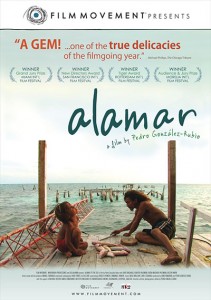
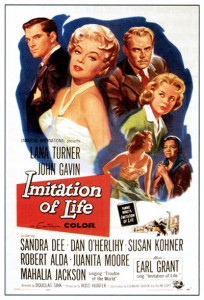

 In Spanish, the term “canicula” refers to the forty most torrid days of the year. For the Totonac people, this period, known as the “days of the bleeding sun,” is marked with significant rites and ceremonies. A captivating ethnographic work, Canicula is a study of the rich cultural heritage and traditions of the Totonac people of Veracruz, Mexico, who have resided in this region for thousands of years. Beautifully photographed, this documentary features rare footage of the Totonac’s “voladores” ritual (“the flying dance”), named an Intangible Cultural Heritage by UNESCO.
In Spanish, the term “canicula” refers to the forty most torrid days of the year. For the Totonac people, this period, known as the “days of the bleeding sun,” is marked with significant rites and ceremonies. A captivating ethnographic work, Canicula is a study of the rich cultural heritage and traditions of the Totonac people of Veracruz, Mexico, who have resided in this region for thousands of years. Beautifully photographed, this documentary features rare footage of the Totonac’s “voladores” ritual (“the flying dance”), named an Intangible Cultural Heritage by UNESCO.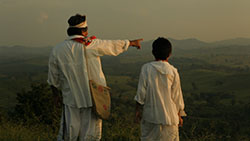 Observation is key in this visual journey to a small village in Zapotal, Santa Cruz, where preparations are underway for the annual rituals. Through an intimate and patient approach, director Jose Álvarez emphasizes the importance of tradition in the preservation of culture and identity. Álvarez concentrates on two areas of the community’s life: the elegant ceramics produced by a cadre of skilled women, led by Hermelinda Santes, and the religious rite of voladores, led by maestro Esteban Gonzalez. Contributing to recent trends in Mexican documentary filmmaking, Canícula follows an anthropological approach that aims to capture the tension between tradition and the creeping forces of modernity. Critically acclaimed Mexican director Alejandro González Iñarritu describes Canícula as “exciting because it is true, beautiful, and poetic.” One of the film’s cinematographers is Pedro Gonzalez-Rubio, the acclaimed documentary director whose films Alamar and Inori screen on Sunday, April 21.
Observation is key in this visual journey to a small village in Zapotal, Santa Cruz, where preparations are underway for the annual rituals. Through an intimate and patient approach, director Jose Álvarez emphasizes the importance of tradition in the preservation of culture and identity. Álvarez concentrates on two areas of the community’s life: the elegant ceramics produced by a cadre of skilled women, led by Hermelinda Santes, and the religious rite of voladores, led by maestro Esteban Gonzalez. Contributing to recent trends in Mexican documentary filmmaking, Canícula follows an anthropological approach that aims to capture the tension between tradition and the creeping forces of modernity. Critically acclaimed Mexican director Alejandro González Iñarritu describes Canícula as “exciting because it is true, beautiful, and poetic.” One of the film’s cinematographers is Pedro Gonzalez-Rubio, the acclaimed documentary director whose films Alamar and Inori screen on Sunday, April 21.
 Told using Mexico’s 200-year-old tradition of corrido music, Al Otro Lado (To the Other Side) (2005) is a documentary that tells the human story behind drug smuggling and illegal immigration from Sinaloa, Mexico, to the streets of South Central Los Angeles. Magdiel, a 23-year-old fisherman and aspiring composer, dreams of a better life in the United States (“the other side”). Coming from the drug capital of Mexico, he faces two choices to improve his life: to traffic drugs or to illegally cross the border into the United States, where even menial jobs can support families and communities left behind. His experiences are rendered through the corrido, troubadour-like ballads through which migrants create their own form of cultural belonging.
Told using Mexico’s 200-year-old tradition of corrido music, Al Otro Lado (To the Other Side) (2005) is a documentary that tells the human story behind drug smuggling and illegal immigration from Sinaloa, Mexico, to the streets of South Central Los Angeles. Magdiel, a 23-year-old fisherman and aspiring composer, dreams of a better life in the United States (“the other side”). Coming from the drug capital of Mexico, he faces two choices to improve his life: to traffic drugs or to illegally cross the border into the United States, where even menial jobs can support families and communities left behind. His experiences are rendered through the corrido, troubadour-like ballads through which migrants create their own form of cultural belonging. Al Otro Lado is director, producer, and filmmaker Natalia Almada’s documentary debut, which aired as part of
Al Otro Lado is director, producer, and filmmaker Natalia Almada’s documentary debut, which aired as part of 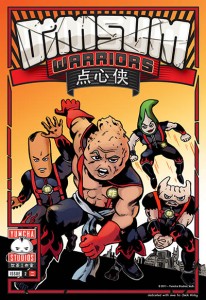 Filmmakers and comic book creators Yen Yen Woo and Colin Goh (who are also, respectively, an education professor and lawyer) will discuss, project, and perform stories from their comic book iPad app, Dim Sum Warriors.
Filmmakers and comic book creators Yen Yen Woo and Colin Goh (who are also, respectively, an education professor and lawyer) will discuss, project, and perform stories from their comic book iPad app, Dim Sum Warriors.
 Heavily in debt, patriarch Loh Poh Huat can’t help but feel bitter irony whenever he has to perform his job as a lawyer’s clerk. At the end of his career and frustrated by the gulf between his middle class dreams and his working class reality, he takes his feelings of failure and envy out on his family. So when Poh Huat suddenly wins two million dollars in the lottery, the Lohs start believing that maybe this windfall will deliver them from their struggles.
Heavily in debt, patriarch Loh Poh Huat can’t help but feel bitter irony whenever he has to perform his job as a lawyer’s clerk. At the end of his career and frustrated by the gulf between his middle class dreams and his working class reality, he takes his feelings of failure and envy out on his family. So when Poh Huat suddenly wins two million dollars in the lottery, the Lohs start believing that maybe this windfall will deliver them from their struggles.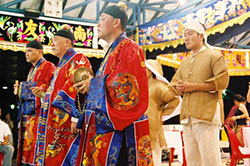 Variety praised it as “a graceful satire on Western capitalism in the East,” while the San Francisco Film Society described Singapore Dreaming as a “delightful story of family ties, status anxiety, and a rapidly changing metropolis. Boasting an ensemble cast of the highest order, this comedy of errors recalls the early films of Ang Lee and the work of Taiwanese director Edward Yang.”
Variety praised it as “a graceful satire on Western capitalism in the East,” while the San Francisco Film Society described Singapore Dreaming as a “delightful story of family ties, status anxiety, and a rapidly changing metropolis. Boasting an ensemble cast of the highest order, this comedy of errors recalls the early films of Ang Lee and the work of Taiwanese director Edward Yang.”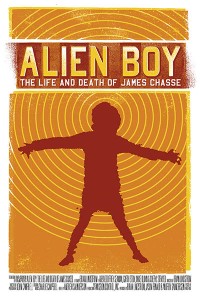
 On September 17, 2006, James Chasse was stopped by three police officers in Portland, Oregon, before a dozen eyewitnesses who watched in horror as the officers tackled, beat, kicked, and tased James until he lay motionless on the pavement. He was not suspected of a crime, nor had he committed one. He died in the custody of the Portland police about two hours later.
On September 17, 2006, James Chasse was stopped by three police officers in Portland, Oregon, before a dozen eyewitnesses who watched in horror as the officers tackled, beat, kicked, and tased James until he lay motionless on the pavement. He was not suspected of a crime, nor had he committed one. He died in the custody of the Portland police about two hours later.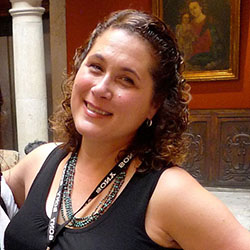 While we love their gutsy vigor, long-form documentaries loom a bit like skyscrapers from the 1960s—overbuilt and probably not sustainable. In comparison, more agile “open space” transmedia projects are taking advantage of digital platforms to become more responsive and flexible and less predictable. Emerging models for participatory documentary are evolving new pathways for distribution and conversation. Using newly available tools and apps, filmmakers are testing how media can communicate stories, imagine social change, and function as a dynamically evolving interactive “open space.” Instead of being defined by national or international borders, the open space documentary model frames local and community-based media practices as key to bringing together people with diverse interests.
While we love their gutsy vigor, long-form documentaries loom a bit like skyscrapers from the 1960s—overbuilt and probably not sustainable. In comparison, more agile “open space” transmedia projects are taking advantage of digital platforms to become more responsive and flexible and less predictable. Emerging models for participatory documentary are evolving new pathways for distribution and conversation. Using newly available tools and apps, filmmakers are testing how media can communicate stories, imagine social change, and function as a dynamically evolving interactive “open space.” Instead of being defined by national or international borders, the open space documentary model frames local and community-based media practices as key to bringing together people with diverse interests. The speakers will demonstrate and discuss examples of media organizations and projects that exemplify the spirit of open space documentary and seek to influence social change. One key example will be EngageMedia (
The speakers will demonstrate and discuss examples of media organizations and projects that exemplify the spirit of open space documentary and seek to influence social change. One key example will be EngageMedia (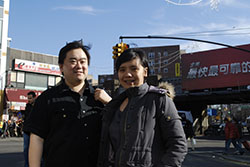 In under four decades, the tiny city-state of Singapore has progressed beyond the “third world” to become one of the world’s richest nations. Among the policies given credit for its economic success are language campaigns that, in an effort to connect Singaporeans linguistically with other populations (especially those of powerful nations), urge them to speak Mandarin Chinese instead of other Chinese dialects, and to speak “Good English” instead of Singaporean English, or “Singlish.” These policies have also led to censorship of ungrammatical English and the curbing of Chinese dialects in the mainstream media; arguably as a result of such censorship, vital local sources of creativity and authenticity have been constrained in Singapore. Drawing from their personal experiences, Singaporean filmmakers Colin Goh and Yen Yen Woo discuss how Singapore’s language policies affect freedom of expression, the creative process, film distribution, and how things are changing. They will illustrate their presentation with clips from their feature film, TalkingCock: The Movie. This film grew out of a satirical website, TalkingCock.com, launched in 2000, that was designed in part to counter the proscriptions and denigrations of Singlish by Singapore’s political leaders.
In under four decades, the tiny city-state of Singapore has progressed beyond the “third world” to become one of the world’s richest nations. Among the policies given credit for its economic success are language campaigns that, in an effort to connect Singaporeans linguistically with other populations (especially those of powerful nations), urge them to speak Mandarin Chinese instead of other Chinese dialects, and to speak “Good English” instead of Singaporean English, or “Singlish.” These policies have also led to censorship of ungrammatical English and the curbing of Chinese dialects in the mainstream media; arguably as a result of such censorship, vital local sources of creativity and authenticity have been constrained in Singapore. Drawing from their personal experiences, Singaporean filmmakers Colin Goh and Yen Yen Woo discuss how Singapore’s language policies affect freedom of expression, the creative process, film distribution, and how things are changing. They will illustrate their presentation with clips from their feature film, TalkingCock: The Movie. This film grew out of a satirical website, TalkingCock.com, launched in 2000, that was designed in part to counter the proscriptions and denigrations of Singlish by Singapore’s political leaders.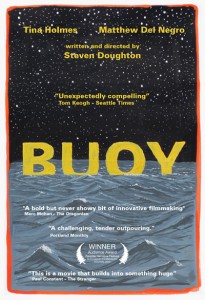

 Portland filmmaker Steven Doughton brings us his first feature film, Buoy (2012), a minimalist drama that traces the revival of a precious familial relationship through a single eighty-minute phone call. Buoy took home the narrative feature award at the 39th Annual Northwest Filmmaker’s Festival in 2012. Marc Mohan from The Oregonian describes Buoy as “A bold but never showy bit of innovative filmmaking.”
Portland filmmaker Steven Doughton brings us his first feature film, Buoy (2012), a minimalist drama that traces the revival of a precious familial relationship through a single eighty-minute phone call. Buoy took home the narrative feature award at the 39th Annual Northwest Filmmaker’s Festival in 2012. Marc Mohan from The Oregonian describes Buoy as “A bold but never showy bit of innovative filmmaking.” Tina Holmes beautifully performs the role of T.C., a suburban mother of two who receives an unexpected phone call from her estranged brother Danny, voiced by Matthew Del Negro. After a two-year communication lapse, the two siblings embark on an emotional journey in which an examination of the past, the present, and the future re-establishes a sense of closeness that had previously disintegrated between them. As T.C. goes about her daily household chores, her telephone conversation is heavy with personal confessions, controversial advice, childhood recollections, and critical judgment. Doughton creates a surprisingly engaging and cinematic experience with the most minimal of means—two characters and one location. The sharp dialogue and terrific acting performances of the two leads (one represented only by voice) bring out the love, depth, and complexity of T.C. and Danny’s challenging relationship.
Tina Holmes beautifully performs the role of T.C., a suburban mother of two who receives an unexpected phone call from her estranged brother Danny, voiced by Matthew Del Negro. After a two-year communication lapse, the two siblings embark on an emotional journey in which an examination of the past, the present, and the future re-establishes a sense of closeness that had previously disintegrated between them. As T.C. goes about her daily household chores, her telephone conversation is heavy with personal confessions, controversial advice, childhood recollections, and critical judgment. Doughton creates a surprisingly engaging and cinematic experience with the most minimal of means—two characters and one location. The sharp dialogue and terrific acting performances of the two leads (one represented only by voice) bring out the love, depth, and complexity of T.C. and Danny’s challenging relationship.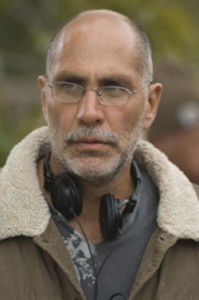 Guillermo Arriaga is a Mexican screenwriter, author, director, and producer. He is also an eloquent speaker and teacher, and he will speak tonight about his evolution as a writer and director. He will also share insights into his approach to screenwriting and the techniques that he has taught in his legendary master classes.
Guillermo Arriaga is a Mexican screenwriter, author, director, and producer. He is also an eloquent speaker and teacher, and he will speak tonight about his evolution as a writer and director. He will also share insights into his approach to screenwriting and the techniques that he has taught in his legendary master classes. Jeremy Rourke is a self-taught animator and musician living in San Francisco. Using paper, paint, shadows, wood, old photographs, new photographs, flowers, tape, pens, pencils, leaves, and sticks to make his animations, his works (which are set to his own music) have been shown at film festivals around the country. During live performances, Rourke tries “really extra hard to magically enter the movie screen.” In 2011, he was named “best new animator/musician” by SF Weekly, which elaborated: “Jeremy Rourke is the kind of artist we love. He follows what inspires him, which in this case is stop-motion animation and music, teaching himself what he needs to get there and along the way producing great work that inspires others. One of his movies, Out to See, places cutouts of assorted figures (a man in an overcoat, a ship, a truck, owls, old-timey bicyclists, fish) in modern-day San Francisco. The song is a mixture of up-tempo and melancholy; Rourke reflects this dichotomy in his images by placing emotive characters into ever-changing scenery that is always surprising, yet (despite its fast pace) never feels hurried. Did we mention he writes and performs the music too?”
Jeremy Rourke is a self-taught animator and musician living in San Francisco. Using paper, paint, shadows, wood, old photographs, new photographs, flowers, tape, pens, pencils, leaves, and sticks to make his animations, his works (which are set to his own music) have been shown at film festivals around the country. During live performances, Rourke tries “really extra hard to magically enter the movie screen.” In 2011, he was named “best new animator/musician” by SF Weekly, which elaborated: “Jeremy Rourke is the kind of artist we love. He follows what inspires him, which in this case is stop-motion animation and music, teaching himself what he needs to get there and along the way producing great work that inspires others. One of his movies, Out to See, places cutouts of assorted figures (a man in an overcoat, a ship, a truck, owls, old-timey bicyclists, fish) in modern-day San Francisco. The song is a mixture of up-tempo and melancholy; Rourke reflects this dichotomy in his images by placing emotive characters into ever-changing scenery that is always surprising, yet (despite its fast pace) never feels hurried. Did we mention he writes and performs the music too?”
 The emergence of the New Chinese Cinema has been one of the most exciting events in the last decade, as it is exploring new ways to represent a society in which billions of inhabitants are submitted to radical and unexpected changes. A new generation of filmmakers (including Wang Bing, Jia Zhangke, Ou Ning, Cao Fei, Ying Liang, Cui Zi’en) are creatively using digital media to coin hybrid forms between documentary and fiction. This presentation will discuss how this new cinema is addressing an overwhelming phenomenon currently taking place in China, the production of ruins as part of planned urban renewal. The spectacle of such ruins is caused by a variety of historical and sociological factors, including the general shift from heavy industry to service industry, the construction of the Three-Gorges Dam, and the preparation for the Olympics in Beijing and World Fair in Shanghai.
The emergence of the New Chinese Cinema has been one of the most exciting events in the last decade, as it is exploring new ways to represent a society in which billions of inhabitants are submitted to radical and unexpected changes. A new generation of filmmakers (including Wang Bing, Jia Zhangke, Ou Ning, Cao Fei, Ying Liang, Cui Zi’en) are creatively using digital media to coin hybrid forms between documentary and fiction. This presentation will discuss how this new cinema is addressing an overwhelming phenomenon currently taking place in China, the production of ruins as part of planned urban renewal. The spectacle of such ruins is caused by a variety of historical and sociological factors, including the general shift from heavy industry to service industry, the construction of the Three-Gorges Dam, and the preparation for the Olympics in Beijing and World Fair in Shanghai.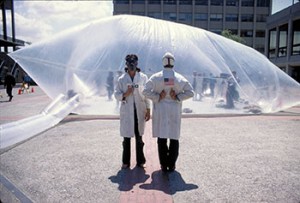 The group Ant Farm created a radical architectural practice during the decade 1968- 1978. This lecture by Ant Farm’s co-founder Chip Lord revisits a number of those seminal works as well as presenting recent projects. Ant Farm Media Van v.08 [Time Capsule] stands as a project that both looks back to the 1970’s as a video archive and forward to the future via a digital time capsule for the year 2030. House of the Century, Cadillac Ranch, Media Burn, and Ant Farm’s legendary “inflatables” will be presented along with Convention City, 1976.
The group Ant Farm created a radical architectural practice during the decade 1968- 1978. This lecture by Ant Farm’s co-founder Chip Lord revisits a number of those seminal works as well as presenting recent projects. Ant Farm Media Van v.08 [Time Capsule] stands as a project that both looks back to the 1970’s as a video archive and forward to the future via a digital time capsule for the year 2030. House of the Century, Cadillac Ranch, Media Burn, and Ant Farm’s legendary “inflatables” will be presented along with Convention City, 1976.


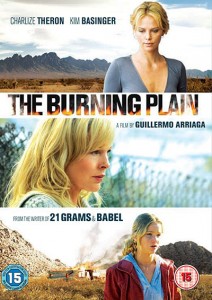
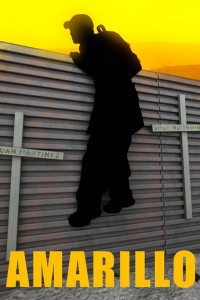
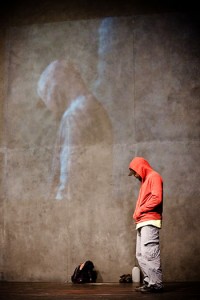
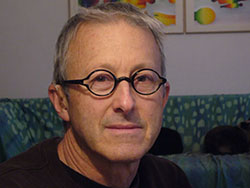 With visiting artist Chip Lord
With visiting artist Chip Lord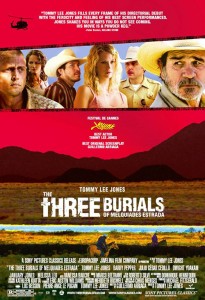
 Critically acclaimed Mexican screenwriter Guillermo Arriaga (Babel, Amores Perros, 21 Grams) made his directorial debut with The Burning Plain (2009), set and largely filmed in Portland, Oregon. At the Venice Film Festival where it premiered, the film received a standing ovation and the Marcello Mastroianni Award for, in her first featured role, an eighteen-year-old actress named Jennifer Lawrence. Lawrence’s audition tape blew away the film’s executive producer and star, Charlize Theron, when Arriaga brought it to her.
Critically acclaimed Mexican screenwriter Guillermo Arriaga (Babel, Amores Perros, 21 Grams) made his directorial debut with The Burning Plain (2009), set and largely filmed in Portland, Oregon. At the Venice Film Festival where it premiered, the film received a standing ovation and the Marcello Mastroianni Award for, in her first featured role, an eighteen-year-old actress named Jennifer Lawrence. Lawrence’s audition tape blew away the film’s executive producer and star, Charlize Theron, when Arriaga brought it to her. As usual with Arriaga, the film is an ensemble drama following several characters in different times and places. Here, the characters are an Oregon woman trying to reconcile with her mother after a traumatic childhood; two teenagers trying to save their parents in a New Mexico border town; a young girl on a journey of redemption; and a couple dealing with their extramarital affair. Sylvia (Charlize Theron), Mariana (Jennifer Lawrence), and Gina (Kim Basinger) are the central female characters who suffer from damaged pasts.
As usual with Arriaga, the film is an ensemble drama following several characters in different times and places. Here, the characters are an Oregon woman trying to reconcile with her mother after a traumatic childhood; two teenagers trying to save their parents in a New Mexico border town; a young girl on a journey of redemption; and a couple dealing with their extramarital affair. Sylvia (Charlize Theron), Mariana (Jennifer Lawrence), and Gina (Kim Basinger) are the central female characters who suffer from damaged pasts.